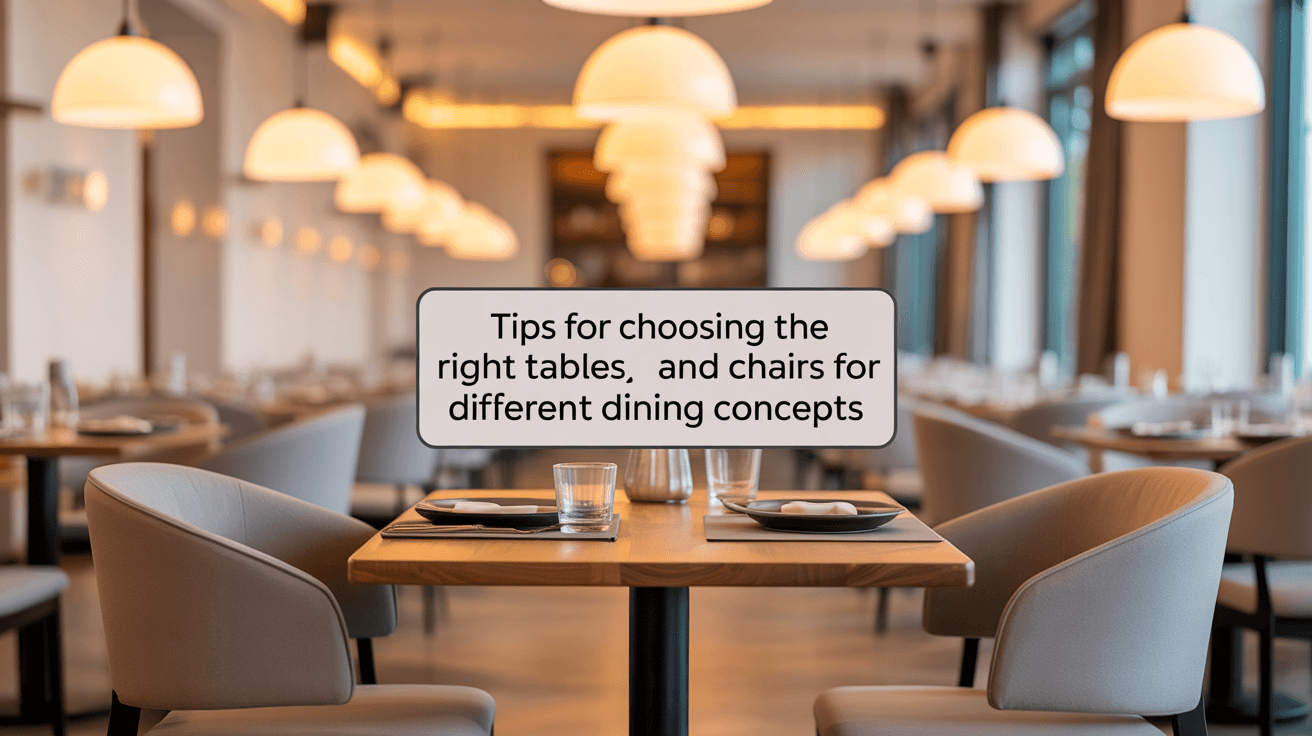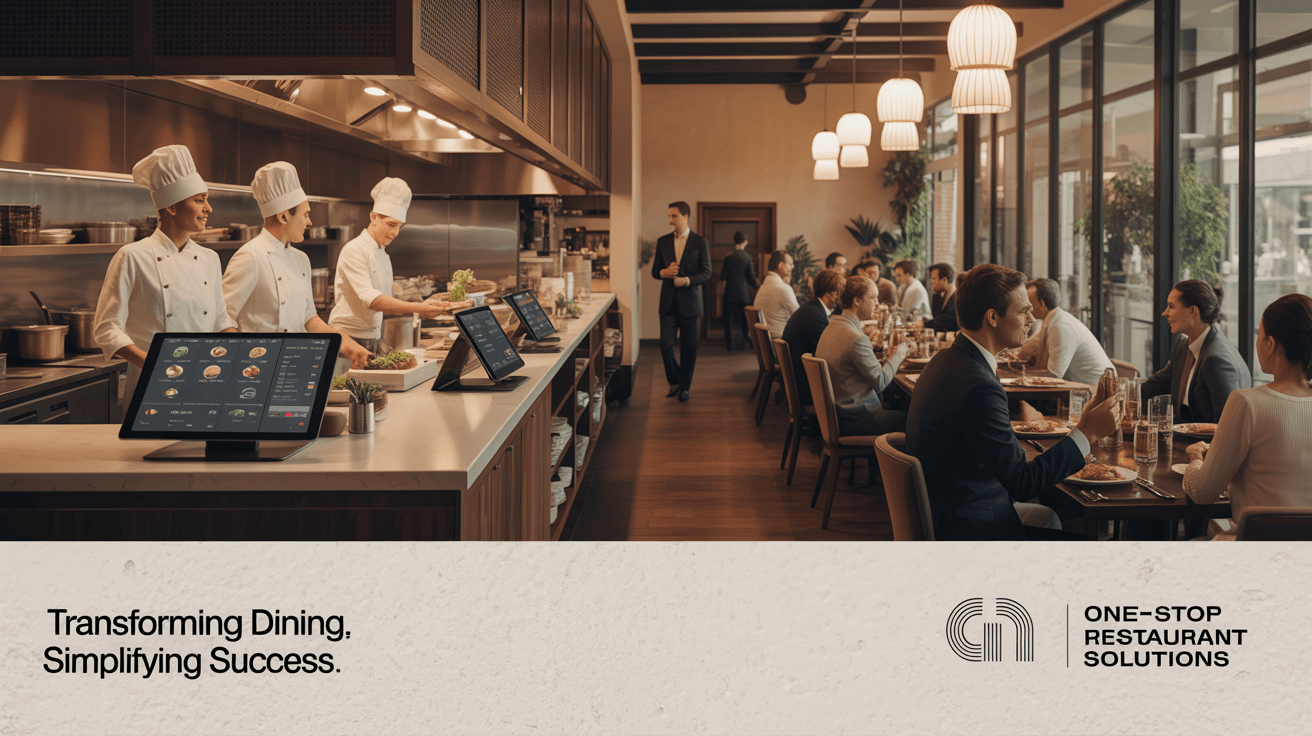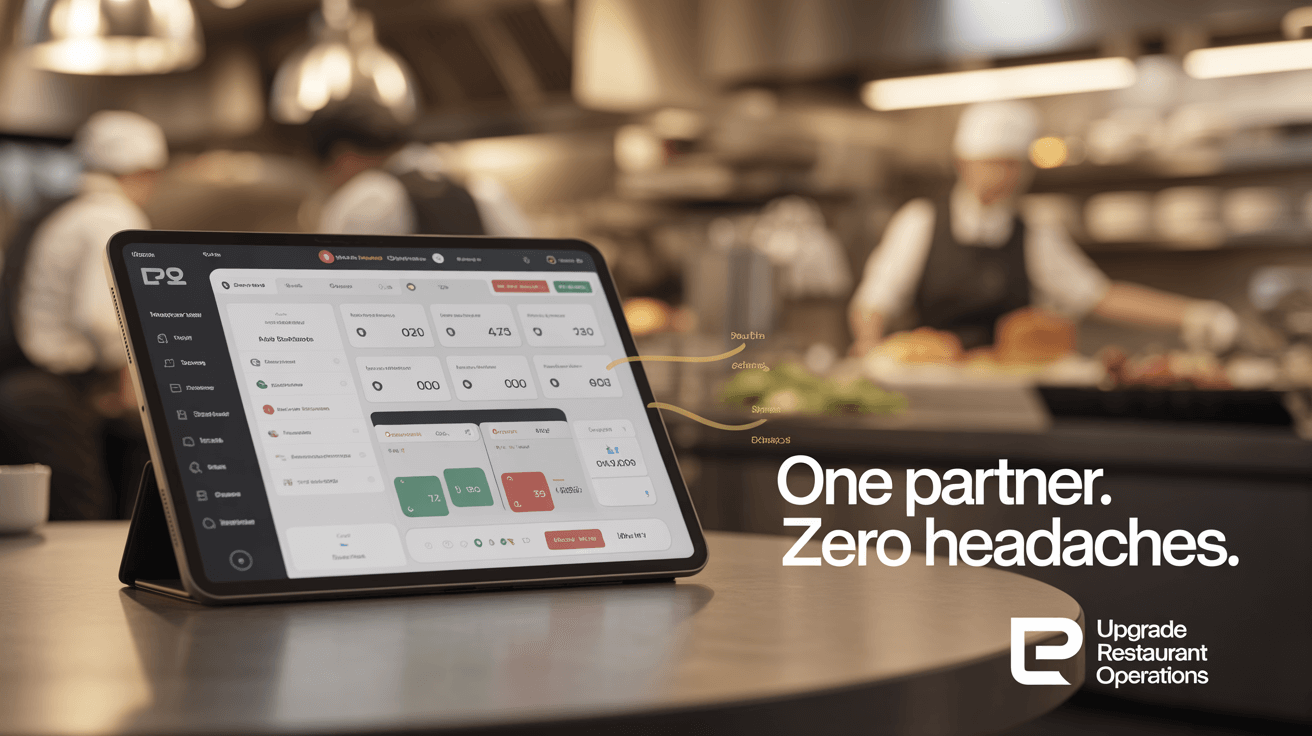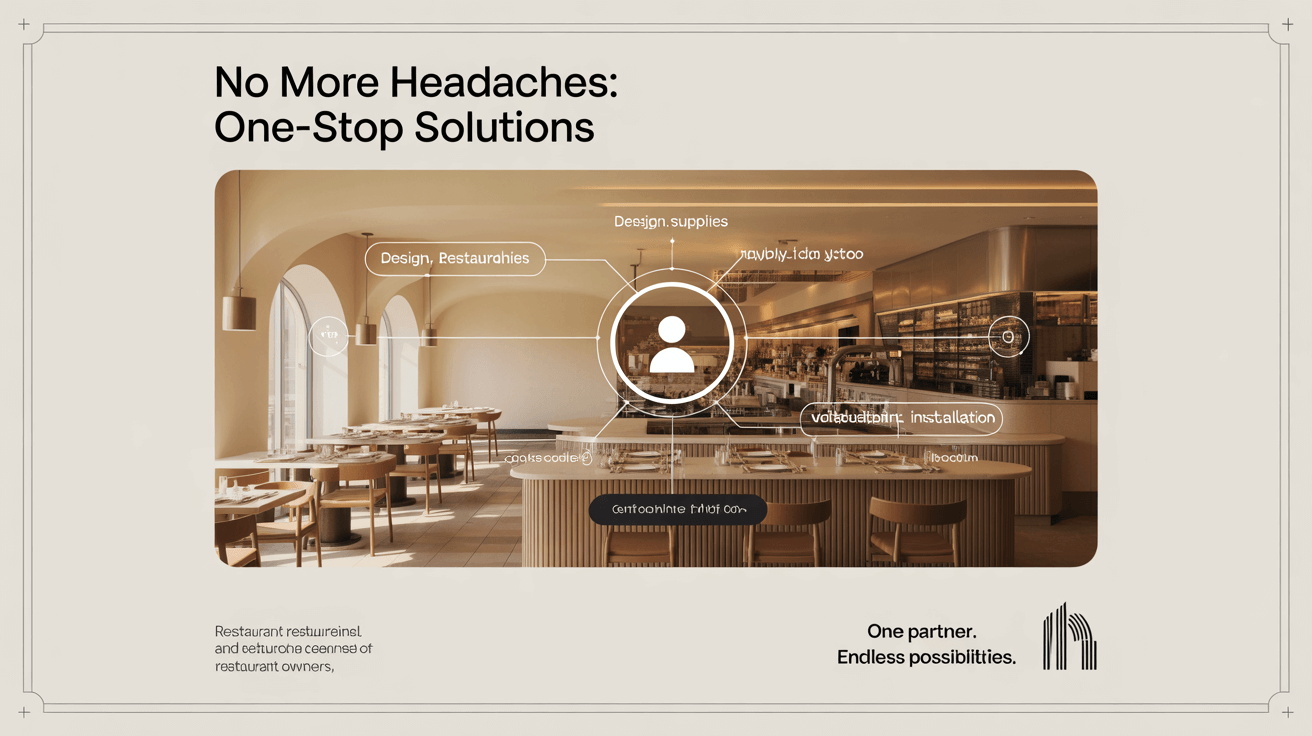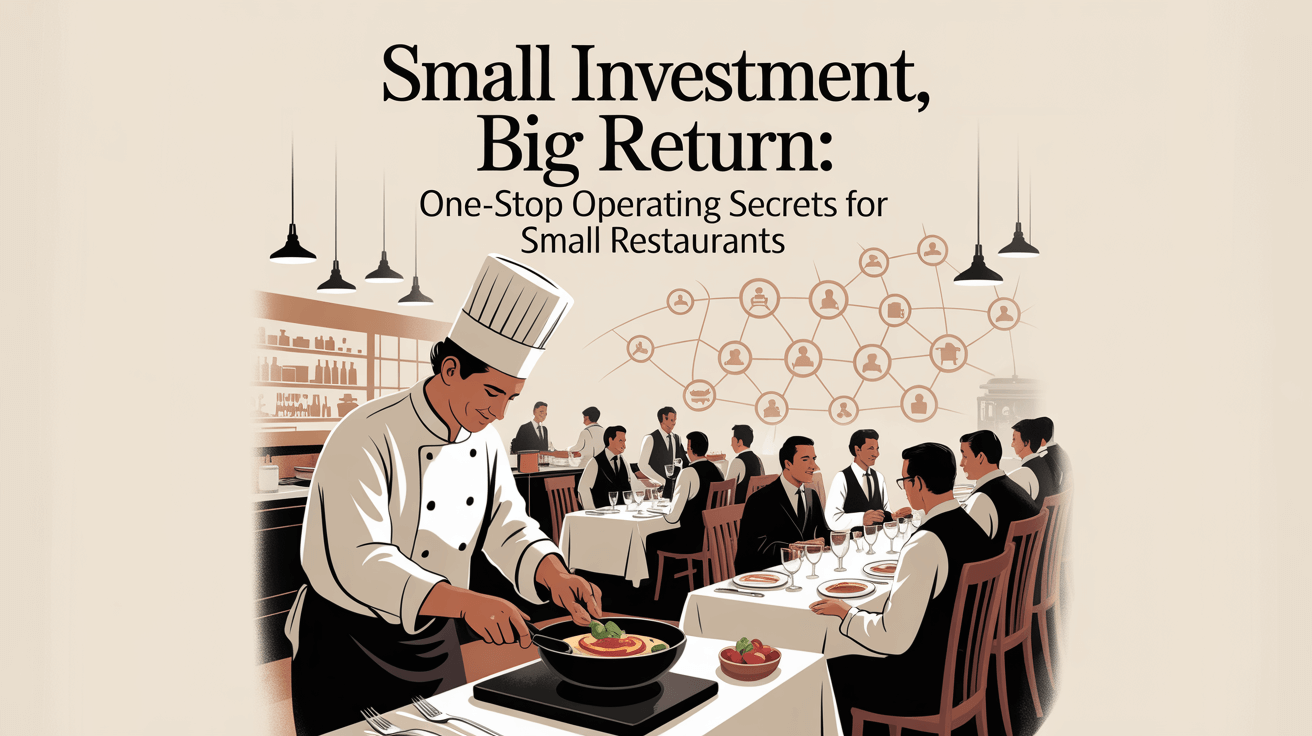Tips for Choosing the Right Tables and Chairs for Different Dining Concepts helps you match seating and surfaces to your restaurant’s style and service model. But here’s the kicker… the perfect pairing elevates guest comfort and reinforces your concept.
1. Understand Your Service Style
● Fine-dining requires formal table heights and upholstered chairs
● Casual bistros favor café-height tables and mixed seating
● Fast-casual zones need durable, wipe-down surfaces
● Bar areas call for counter-height stools with footrests
Ready for the good part? aligning furniture to service streamlines operations and guest flow.
| Service Style | Table Height | Chair Type |
|---|---|---|
| Fine Dining | 28″–30″ | Upholstered dining chairs |
| Café/Casual | 24″–26″ | Bistro chairs or stools |
2. Match Aesthetic and Branding
● Modern minimalism uses slim-profile bases and neutral tones
● Rustic concepts favor reclaimed wood and industrial metal frames
● Luxury venues opt for plush upholstery and polished surfaces
● Themed restaurants integrate custom patterns and colors
What’s the real story? cohesive aesthetics strengthen brand identity and guest recall.
3. Prioritize Comfort for Dwell Time
● Choose chairs with contoured backs and seat depths of 18″–20″
● Look for high-density foam (ILD 30–35) in upholstered seats
● Ensure footrests on stools sit at 12″ from the floor
● Test samples under real-world seating conditions
This is where it gets interesting… comfort extends stays and increases average checks.
4. Factor in Durability and Maintenance
● Opt for performance vinyl or treated textiles rated ≥50K double rubs
● Select powder-coated steel frames resisting chips and rust
● Use sealed wood or composite tabletops for easy cleaning
● Avoid intricate details that trap crumbs and spills
But here’s the kicker… low-maintenance materials reduce labor costs and downtime.
| Material | Durability Rating | Maintenance Tip |
|---|---|---|
| Performance Vinyl | 75K+ rubs | Wipe with mild soap daily |
| Powder-Coated Steel | High | Rinse and dry weekly |
5. Scale and Space Efficiency
● Use pedestal table bases to free legroom and ease movement
● Choose armless or slim-arm chairs in narrow aisles
● Combine bench seating along walls to maximize capacity
● Consider stackable stools that store vertically off-peak
Ready for the good part? space-smart choices boost seat counts without crowding.
6. Support Accessibility and Codes
● Maintain 36″ clear aisles between tables for ADA compliance
● Provide at least one accessible table with 27″ knee clearance
● Use stable, non-tip chairs and stools in public areas
● Verify fire-retardant upholstery ratings (NFPA 701)
What’s the real story? accessible design broadens your guest pool and avoids fines.
7. Balance Indoor and Outdoor Needs
● Indoor seating can be fabric-upholstered; outdoors needs UV and water-resistant materials
● Select HDPE or teak for patio tables resisting rot and fade
● Match table heights indoors and out for consistency
● Use heavier bases outdoors to prevent tipping in wind
This is where it gets interesting… seamless indoor-outdoor flow enhances usable space.
| Location | Recommended Material | Key Feature |
|---|---|---|
| Outdoor Patio | HDPE or Teak | Weatherproof |
| Indoor Dining | Upholstered Fabrics | Comfort and style |
8. Accommodate Group Sizes
● Round or oval tables encourage communal dining for groups of 4–6
● Rectangular banquet tables suit larger parties and events
● Modular booths let you expand or contract seating runs
● Mix central freestanding tables with peripheral booths
But here’s the kicker… flexible group seating adapts to changing guest counts.
9. Highlight Focal Areas
● Feature signature bar counters with custom stools
● Anchor lounge zones with low-slung sofas and coffee tables
● Place chef’s-table seating on higher stools for spectacle dining
● Use distinct table shapes or finishes in VIP nooks
Ready for the good part? focal furniture draws attention and creates memorable moments.
10. Integrate Technology Seamlessly
● Embed USB-A/C ports under table aprons for device charging
● Mount wireless-charging pads flush in table surfaces
● Choose tables with built-in service-call buttons at bench ends
● Conceal wiring in routed channels beneath chairs and tables
What’s the real story? tech-ready furniture delights connected guests and enhances service.
11. Consider Acoustic Impact
● Upholstered chairs and booths absorb ambient noise
● Fabric panels behind seating dampen chatter
● Use table mats or runners to soften clatter
● Space furniture to avoid hard echoes in open areas
This is where it gets interesting… acoustic balance boosts conversation and comfort.
12. Source Sustainable and Eco Options
● Look for FSC-certified wood tables supporting responsible forestry
● Choose recycled-plastic lumber for outdoor benches
● Select low-VOC powder-coats and adhesives
● Partner with vendors offering take-back or recycling programs
But here’s the kicker… eco-friendly choices appeal to green-minded diners and reduce waste.
13. Plan for Seasonal Changes
● Use stackable chairs that tuck away in winte.
● Swap removable slipcovers on booths for seasonal colors
● Store lightweight tables indoors during harsh weather
● Rotate accent cushions to refresh the look quarterly
Ready for the good part? seasonal adaptability keeps your décor vibrant and functional.
14. Evaluate Total Cost of Ownership
● Compare upfront costs, maintenance, and replacement cycles
● Aim for materials that last 5–7 years in high-traffic zones
● Factor in warranties and service agreements
● Calculate cost per seat per year for budget planning
What’s the real story? lifecycle costing ensures smarter investments.
| Cost Element | Consideration | Impact |
|---|---|---|
| Upfront Purchase | Unit price | Initial budget hit |
| Maintenance | Cleaning and repairs | Ongoing labor cost |
| Replacement Cycle | Expected years of use | Capital planning |
15. Prototype and Test Before Rollout
● Order a small batch of chairs and tables for your space
● Invite staff and select guests to trial for comfort and fit
● Monitor wear patterns and maintenance needs over 2–4 weeks
● Adjust specifications before full-scale order
This is where it gets interesting… prototyping catches issues early and saves major rework.
Conclusion
Choosing tables and chairs that fit your dining concept—from service style and branding to comfort and durability—creates cohesive experiences that delight guests and drive loyalty. Apply these tips to outfit each zone perfectly.
FAQ
Q1: What table shape works best for small groups?
Round 36″ tables fit up to four comfortably and enhance conversation.
Q2: How often replace high-traffic chairs?
Plan to refresh seating every 5–7 years depending on wear and material.
Q3: Are modular booths worth the cost?
Yes—they offer flexibility to adjust seating capacity for varying party sizes.
Q4: What upholstery cleans easiest?
Performance vinyl rated ≥50K double rubs wipes clean and resists stains.
Q5: How do I calculate cost per seat?
Divide total lifecycle cost (purchase, maintenance, replacement) by expected years of service and seat count.

